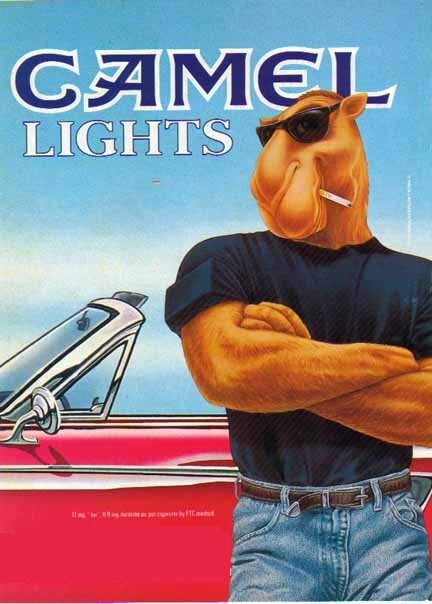Smokers are running out of room. Due to a growing number of California communities banning cigarette smoking in public places, lighting up is becoming more of a challenge. And now even local Starbucks coffeehouses, where cups of joe and cigarettes traditionally go hand in hand, recently have joined the smoke-free cavalcade.
Lawmakers also are rethinking outdoor smoking. This past May, Gov. Arnold Schwarzenegger vetoed an otherwise widely supported bill that would have barred smoking at most state beaches and parks; Sacramento already prohibited smoking in its parks in 2007. This followed on the heels of a 2002 law passed to prohibit smoking within 20 feet of any city of Sacramento building and a 2003 state law stating that there could be no smoking within 20 feet of any government building.
As for indoor smoking, more and more cities continue to ban it in multiunit housing facilities. Major hotel chains, including Sacramento-area Marriott, have gone smoke free, with designated smoking areas outside their facilities.
But the banning-smoking-outdoors trend truly has gained steam with Starbucks, which on June 7 made its patio-seating areas smoke-free in all California stores. Its decision, which could alienate loyal customers that enjoy lingering over coffee and cigarettes, also might kick-start a trend of more businesses going smoke-free.
“Starbucks, being a big chain, feels a lot more comfortable adopting the policy,” says Liz Williams, project manager with Americans for Nonsmokers’ Rights. “I would imagine more companies might follow Starbucks’ lead.”
Williams is excited about Starbucks’ new policy and says there’s been positive feedback from communities. “The outdoor, smoke-free movement is growing in response to public demand,” she says. “People are exploring what works best for their community.”
In fact, entire hospitality districts in California cities have now prohibited cigarettes. The Third Street Promenade, a six-block outdoor mall in Santa Monica, recently became completely smoke-free, joining its nearby city beaches. “They’re one of the first communities to look at making a shopping district smoke-free,” Williams notes.
Smokers, needless to say, aren’t pleased with the movement. “It makes you not want to go to Starbucks anymore, because you can’t sit and visit,” says Casey Campbell, a Sacramento resident who was taking an afternoon smoke break in Midtown last week.
Other Sacramentans agree. “I would go to a different coffee shop if they allowed me to smoke,” says Irene Saala-Williams, a local smoker. “I feel that as long as smoking is legal, we should be able to [smoke] outside.”
But a Sacramento Starbucks manager, who preferred to remain anonymous, says that, so far, the restriction hasn’t impacted sales. “I don’t think we’ve seen a dip in business because of the policy,” she observes.
Smokers-rights advocates are worried, though, that people’s freedom to smoke is slowly being ostracized from the civic outdoors. “You’re telling smokers ‘You’re not wanted at these public places,’” argues Robert Best, state coordinator of The Smokers Club Inc. “That’s discrimination. You’re telling me I can’t have a cigarette when it’s in an outdoor environment, when it’s not hurting anybody?”
But experts say cigarettes are causing harm—and in more ways than we realize. According to April Roeseler, chief of local programs at the California Tobacco Control Program, a division of the California Department of Public Health, one major issue is ecological. Specifically, she cites the refuse left from cigarette butts at California beaches and parks. “It’s like toxic waste,” Roeseler says. “Forty-four percent of litter is cigarette butts and 13 percent of the California adult population smokes. That’s pretty significant.”
“It’s very toxic for fish and other marine life, and for children and pets [who consume] it,” adds Bronson Frick, associate director of Americans for Nonsmokers’ Rights.
Still, many national parks continue to allow smoking. And Best argues that if anti-smoking advocates don’t want cigarette butts around, then public areas need more trash cans with ash trays. “I find trash everywhere,” he says, “not just cigarette butts.”

Casey Engmark hangs out at a local Starbucks drinking coffee and smoking. Maybe he doesn’t know about the coffee chain’s new policy that bans smoking in its outdoor environs?
PHOTO BY JEROME LOVE
|
|
As for Starbucks, nonsmokers-rights advocate Williams says she’d receive frequent calls from unhappy customers about secondhand smoke. “They were frustrated that they couldn’t enjoy a sandwich or coffee because of the drifting smoke,” she explains.
The Starbucks manager says that she too had been bombarded with complaints before her company banned smoking on its patios. “People in the lobby we’re bothered from smoke coming in through the doors,” she explains.
Best counters that Starbucks is pushing away its base. “For a smoker, [coffee and a cigarette] tend to go hand in hand,” he says, noting that smoke “dissipates outside.”
Starbucks’ written statement on the ban says that the smoking “interferes with the aroma of [their] coffee,” and that, specifically, smoking will be restricted within 20 feet of all the chain’s coffeehouses. “If someone is smoking on our patio, it’s usually simply a case of a customer not being aware of our policy,” the statement explains. “When told of our policy, people understand. If they wish to continue smoking they are asked to leave. We have had very few issues to date.”
But the Starbucks manager says that smoking isn’t the easiest thing to put the kibosh on, and that customers don’t always comply. “It’s 50-50,” she surmises of her success rate. “We have customers that keep smoking out there and wait for us to tell them to stop.”
Is it a hassle? “I would prefer to not police it. I have other responsibilities to tend to,” the manager says.
Some Starbucks smokers might not be aware of the policy yet. The coffeehouses’ outdoor tables are adorned with posted cards explaining the new smoke-free decision, which is partially based on Proposition 65, the California’s Safe Drinking Water and Toxic Enforcement Act that voters passed in 1986. But on some tables, the cards are missing.
Best thinks smokers will be proactive and find a spot to smoke anyway. They will walk out the door with their coffee, go around the corner and light up, he says.
“[But] it makes you want to get your coffee to go,” says smoker Campbell, who still enjoys going to the coffee giant despite the change.
Sacramento could see more smoke-free zones in its future, if other California cities signal a trend.
In 2007, Belmont, a city in the Bay Area, received national attention by becoming one of the first cities to adopt a policy that forbids smoking in multi-unit housing. Belmont also has 100 percent smoke-free workplaces, restaurants and free-standing bars.
East Bay city Richmond soon followed with a similar housing measure. Sebastopol is currently debating the issue, as well, and is on the brink of passing a comparable ordinance.
“The smoke drifts between the electrical sockets, plumbing and ventilation systems,” Williams explains of why cities are enacting such regulations.
Calabasas, in Southern California, is believed to have the strictest outdoor-smoking policy in the nation, where having a cigarette is banned in all indoor and outdoor areas, and you can only light up in designated smoking zones.
Best says this could lead to ridiculous extremes. “Legislation is trying to ban smoking in cigar shops and hookah or charcoal bars,” he says, laughing. With all the additional restrictions, he laments that smokers might actually one day have to drive to Nevada to enjoy a cigarette.
One thing is for sure: Smokers will always find a way.
 No matter how you slice it, puffing on a cigarette, or any other tobacco product for that matter, simply ups the ante for more health complications. Smoking causes nearly 1 in 5 deaths each year. About 8.6 million Americans suffer from smoking-related chronic conditions, including chronic bronchitis, emphysema and heart disease.
No matter how you slice it, puffing on a cigarette, or any other tobacco product for that matter, simply ups the ante for more health complications. Smoking causes nearly 1 in 5 deaths each year. About 8.6 million Americans suffer from smoking-related chronic conditions, including chronic bronchitis, emphysema and heart disease. When you hear the name Camel, you really have a vision of the exotic places of Egypt and Morocco. If you loving smoking Camel, then you know how if you are hot for a pack of these cigarettes, then you need to make sure that you grab your Camel coupons before you head out to the store.
When you hear the name Camel, you really have a vision of the exotic places of Egypt and Morocco. If you loving smoking Camel, then you know how if you are hot for a pack of these cigarettes, then you need to make sure that you grab your Camel coupons before you head out to the store.